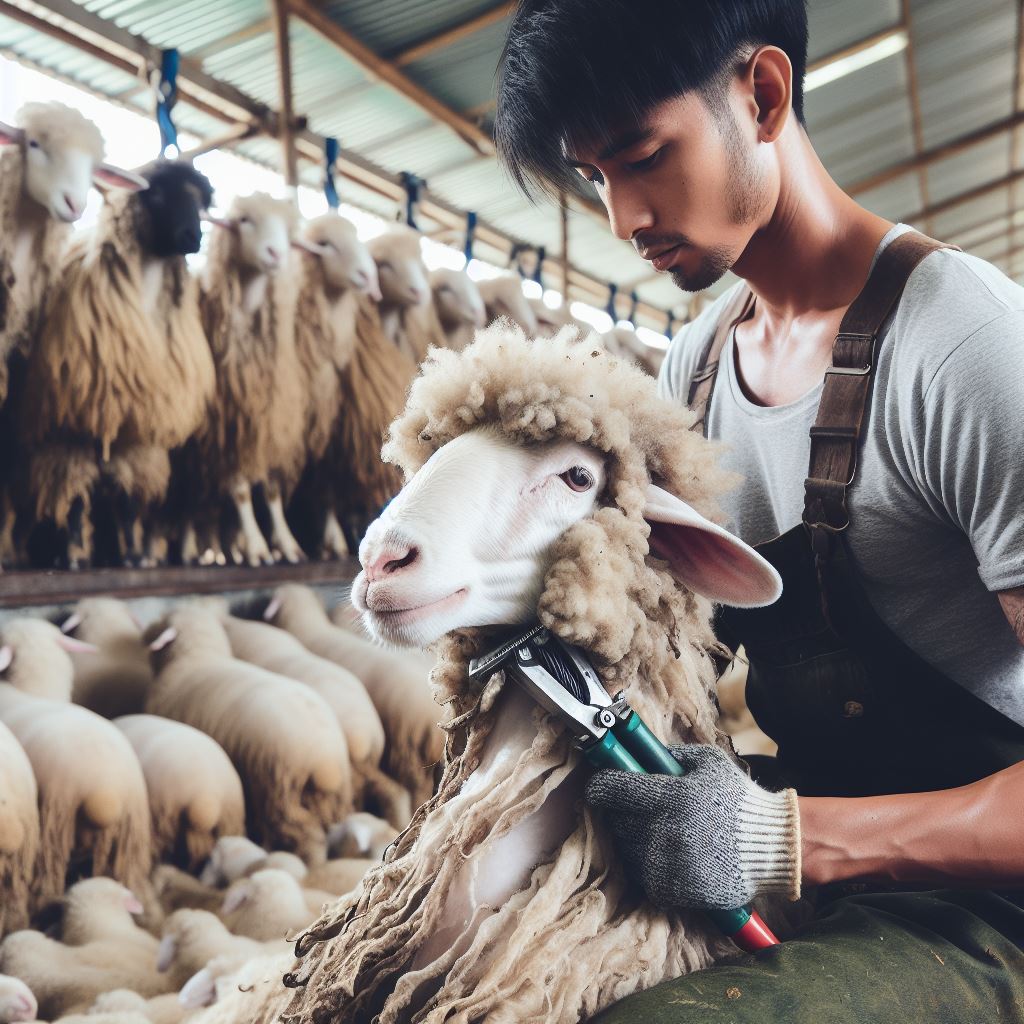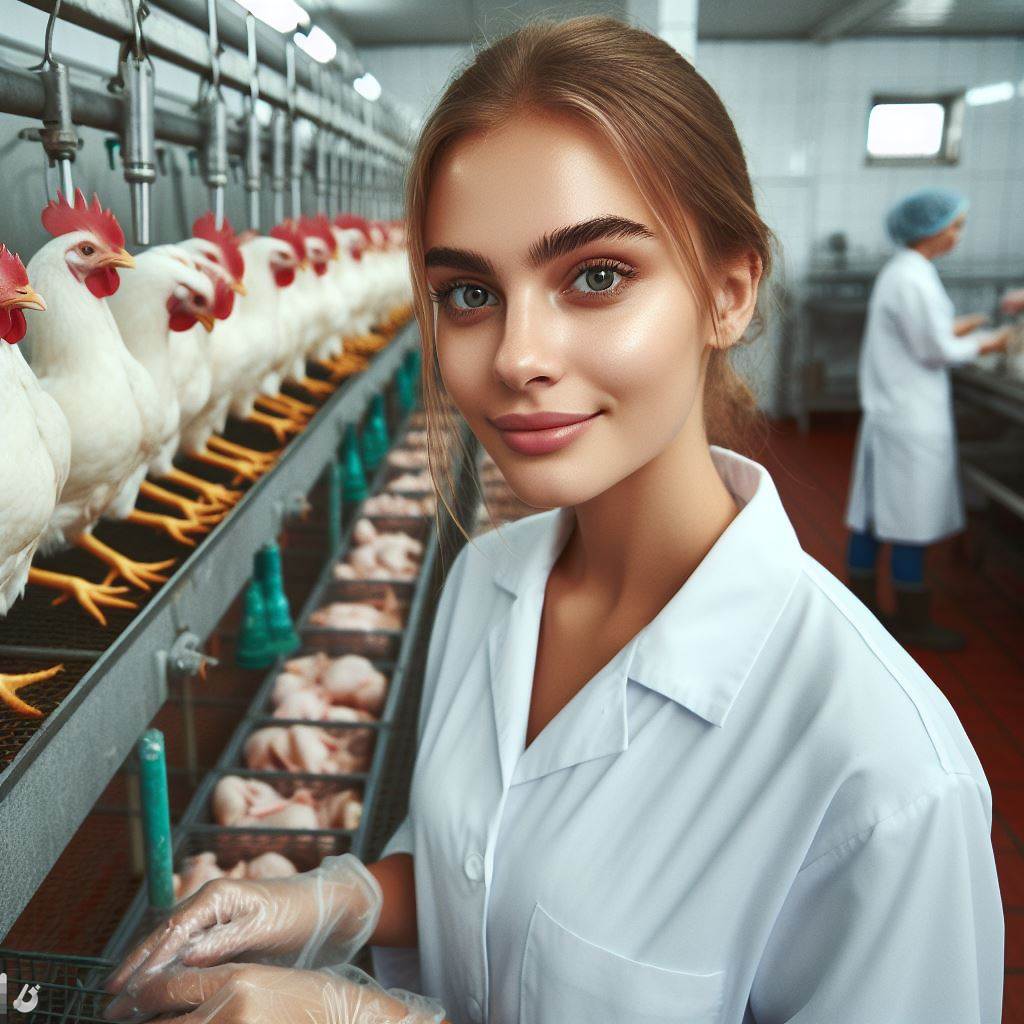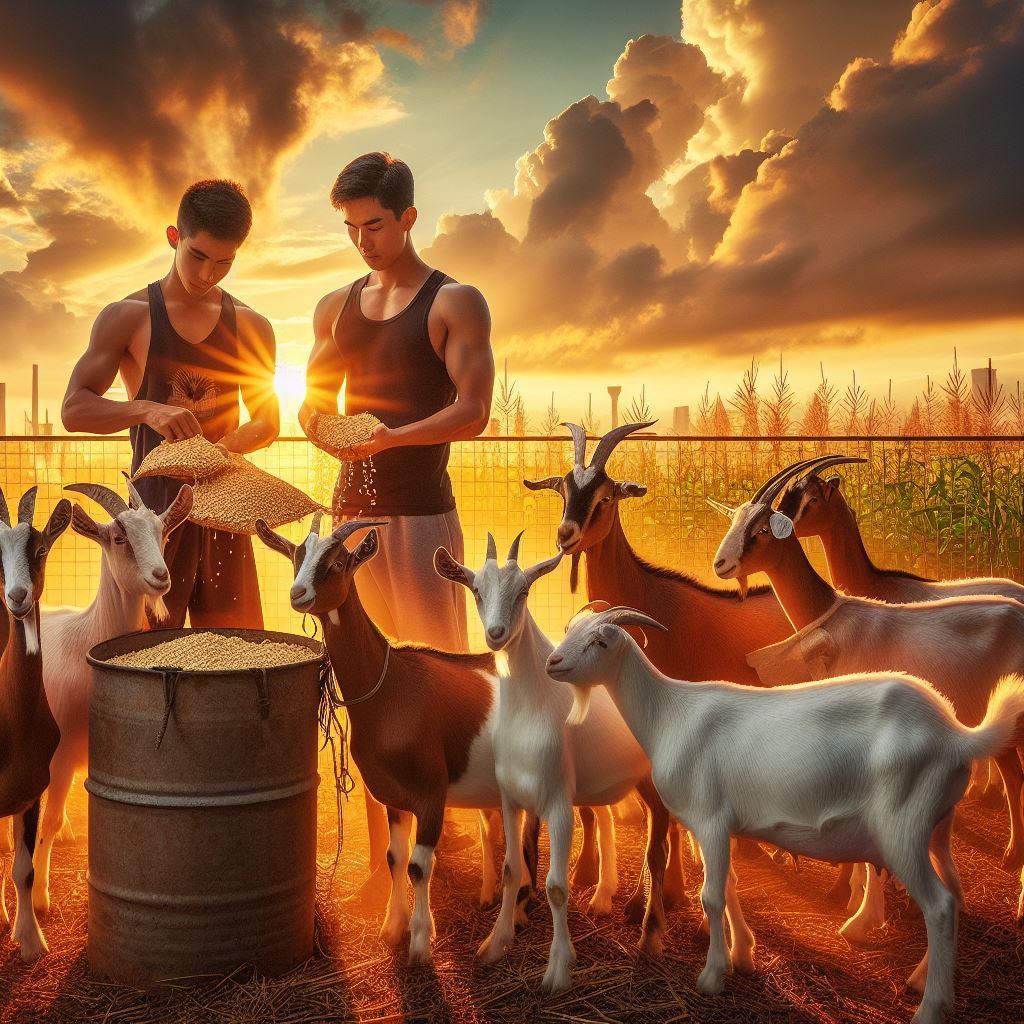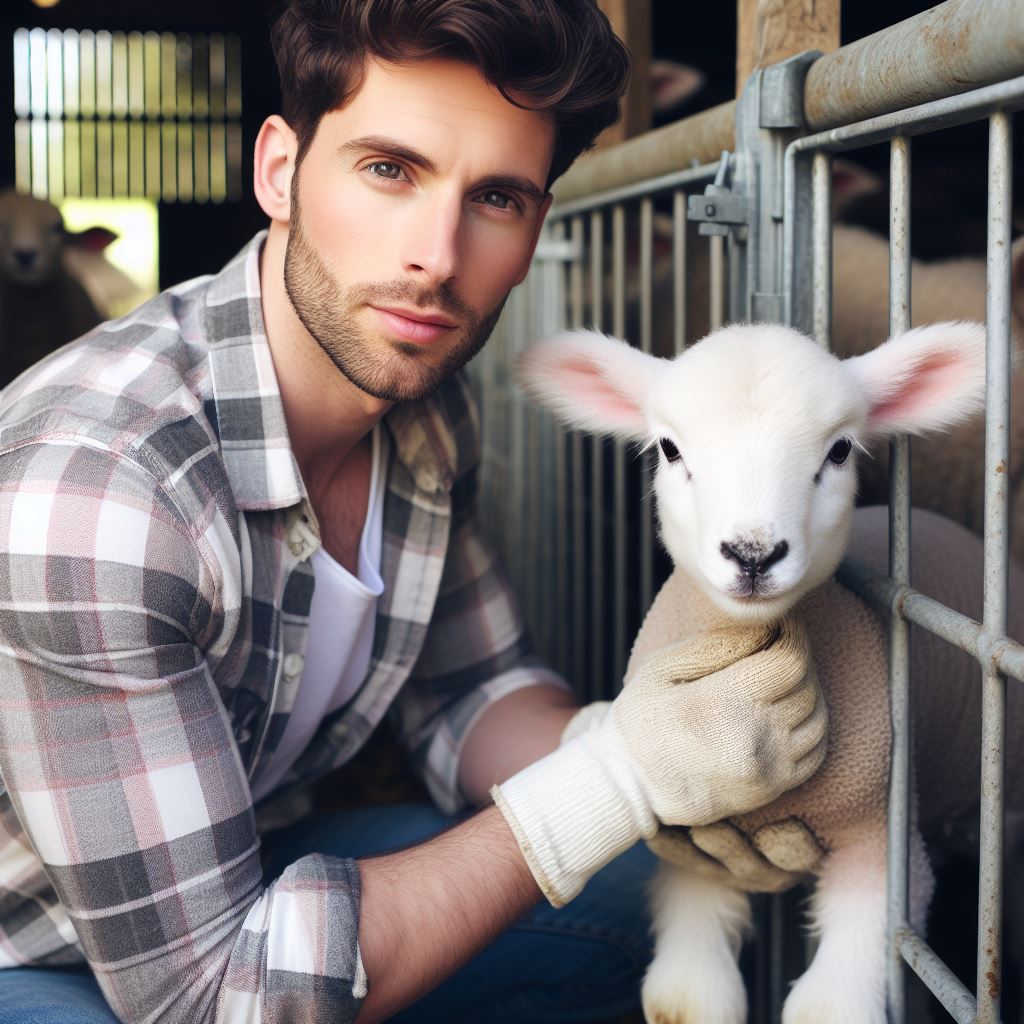Introduction
Brief explanation of the importance of goat farming in the United States
Goat farming plays a crucial role in the agricultural industry of the United States.
Goat farming in the United States holds immense significance, contributing to sustainable agriculture, meat, and dairy production.
Goats are resilient, adaptable, and provide valuable resources.
This industry supports rural economies, promotes land conservation, and meets the growing demand for ethically sourced, nutritious goat meat and dairy products.
Purpose of the blog post
This blog post aims to provide American farmers with essential information on goat breeds suitable for their farms.
By exploring various goat breeds, farmers can make informed decisions to maximize their farm’s potential.
Overview of Goat Breeds
Goats, with their remarkable adaptability, come in a vast number of breeds worldwide. However, for American farmers, focusing on key breeds that suit their specific needs is essential.
Here are some of the most suitable goat breeds for American farmers:
Alpine Goats
Known for their high milk production, Alpine goats are hardy and adaptable to various climates.
They have excellent udder capacity and are a popular choice for dairy farmers.
LaMancha Goats
These goats are easily recognizable due to their unique trait of having very small or non-existent external ears.
LaManchas are known for their calm temperament and high milk production.
Nigerian Dwarf Goats
Despite their smaller size, Nigerian Dwarf goats are excellent milk producers, providing rich and creamy milk.
They are popular for their friendly demeanor and adaptability to small farms.
Saanen Goats
Saanens are one of the largest dairy goat breeds, known for their high milk production and mild temperament.
Transform Your Agribusiness
Unlock your farm's potential with expert advice tailored to your needs. Get actionable steps that drive real results.
Get StartedThey have white or cream-colored coats and are frequently used for commercial dairy farming.
Nubian Goats
Nubian goats, known for their long, drooping ears and distinctive Roman nose, boast a well-regarded reputation for the high butterfat content in their milk.
They are adaptable to various climates and are suitable for both milk and meat production.
Boer Goats
Meat producers primarily raise Boer goats for their excellent growth rates and well-muscled bodies, making them quite popular in the American meat industry.
Spanish Goats
Originating from Spain, these goats are hardy and adaptable to various environments.
They are known for their excellent foraging abilities, making them suitable for brush clearing and controlling vegetation on farms.
Kiko Goats
The hardy breed known for excellent meat production and resistance to parasites is Kiko goats.
Many American farmers prefer them for their low maintenance needs, requiring minimal intervention.
Toggenburg Goats
Toggenburg goats, originating from Switzerland, represent one of the oldest known dairy breeds, showcasing excellent milk production and adaptability to rugged terrains.
Oberhasli Goats
Oberhasli goats exhibit a gentle and friendly nature, and they produce high-quality milk, boasting a beautiful bay-colored coat.
They are medium-sized dairy goats.
Cashmere Goats
Cashmere goats are primarily raised for their luxurious, soft cashmere wool.
They are adaptable to various climates and are suitable for small-scale fiber production.
Angora Goats
Known for their long, lustrous mohair, Angora goats are primarily raised for their fiber production.
They require regular shearing and are adaptable to a range of climates.
Understanding the various goat breeds available allows American farmers to choose the ones that align with their farming goals and requirements.
Whether for dairy, meat, fiber, or vegetation management, there is a suitable breed available to cater to every farmer’s needs.
Read: Green Goat Farming Methods
Dairy Goat Breeds
Importance of dairy goat breeds for milk production
In the realm of goat farming, dairy goat breeds are of utmost importance for milk production.
These breeds have been specifically bred and carefully selected to maximize milk yield and quality.
Their adaptability to various climates and their docile nature make them the ideal choice for American farmers.
Nubian
One of the most popular dairy goat breeds in America is the Nubian.
Nubians are known for their high butterfat content in their milk, making it ideal for cheese and butter production.
They are also recognized for their distinctive Roman nose and long, pendulous ears.
Showcase Your Farming Business
Publish your professional farming services profile on our blog for a one-time fee of $200 and reach a dedicated audience of farmers and agribusiness owners.
Publish Your ProfileSaanen
Another favorite among American farmers is the Saanen breed.
Saanens exhibit exceptional milk production, producing high volumes of milk with relatively low butterfat content.
Commercial dairy farmers often prefer these all-white goats for their efficiency in milk production.
Alpine
The Alpine breed is a versatile dairy goat choice for American farmers.
This breed adapts well to different climates and terrains, making it suitable for a variety of farming operations.
Alpines produce moderate amounts of milk with a moderate butterfat content, making it a well-rounded option.
LaMancha
The LaMancha breed is easily recognizable by its unique ear shape or lack thereof.
Known for their calm temperament, LaManchas are highly sought after by dairy goat enthusiasts.
They produce a good amount of milk with a moderate butterfat content.
Dairy goat breeds play a crucial role in milk production on American farms.
Compared to cows, goats require less space and can be more easily managed, making them an attractive choice for dairy farming.
Their milk is highly nutritious and is an excellent source of vitamins, minerals, and proteins.
Many consumers with lactose intolerance can also tolerate goat milk better than cow milk.
Apart from milk production, dairy goat breeds have other benefits as well.
Organic farmers can use their manure as a valuable source of organic fertilizer, contributing to sustainable farming practices.
Furthermore, grazing programs can employ goats to help control weeds and unwanted vegetation.
Their gentle and friendly nature also makes them suitable for petting zoos and educational programs.
When considering dairy goat breeds, American farmers must carefully assess their specific farming goals, resources, and climate conditions.
Each breed has its own advantages and characteristics that may best suit different farming needs.
It is crucial to choose breeds that will thrive in the geographical location and climate conditions of the farm.
Overall, dairy goat breeds occupy an indispensable place in American farming.
Their milk production capabilities, adaptability, and versatile uses make them a valuable asset for any farmer.
Whether it’s the Nubian, Saanen, Alpine, or LaMancha, each breed offers its own unique contribution to the dairy industry.
By selecting the right breed and implementing proper management practices, farmers can maximize their milk production and ultimately enhance the success of their farm.
Read: Sheep Farming: Basics & Innovations
Meat Goat Breeds
Meat goat breeds play a crucial role in meat production, providing American farmers with a steady source of high-quality meat.
These breeds have been specifically bred and selected for their meat production qualities, making them a valuable asset to the farming community.
Boer
One of the most popular meat goat breeds for American farmers is the Boer breed.
Originating in South Africa, Boer goats are known for their fast growth rate and excellent carcass quality.
They have a muscular build and are typically white with a reddish-brown head.
Boer goats have a high feed conversion ratio, meaning they can efficiently convert feed into meat.
Their ability to adapt to different climates and their resistance to diseases make them ideal for meat production in various regions of the United States.
Additionally, Boer goats have a calm temperament, making them easier to handle and manage on the farm.
This breed’s meat is known for its tenderness, juiciness, and rich flavor, making it highly sought after by consumers.
Kiko
Another meat goat breed gaining popularity among American farmers is the Kiko breed.
Originating in New Zealand, Kiko goats are known for their hardiness and ability to thrive in harsh environments.
They have a sturdy frame and are typically white or cream in color.
Kiko goats have a high fertility rate and excellent maternal instincts, making them efficient breeders.
They also have a fast growth rate and are known for their strong immune system, which reduces the need for extensive veterinary care.
Furthermore, Kiko goats have a high resistance to parasites, allowing them to graze on a variety of forage without significant health issues.
Showcase Your Farming Business
Publish your professional farming services profile on our blog for a one-time fee of $200 and reach a dedicated audience of farmers and agribusiness owners.
Publish Your ProfileTheir meat is lean, tender, and flavorful, making it a popular choice among health-conscious consumers.
Spanish
Spanish goats, often referred to as brush goats, are a traditional meat goat breed well-suited to the American farming landscape.
These goats have a medium-sized frame and come in various colors, including black, brown, and white.
Spanish goats are known for their exceptional foraging abilities and adaptability in different climates and terrains.
They possess a high resistance to parasites and diseases, making them ideal for extensive grazing systems.
In addition to their meat production qualities, Spanish goats are often used for brush and weed control on farms and ranches.
They have a natural curiosity and intelligence that makes them excellent browsers, helping to maintain pasture and brushland.
The meat of Spanish goats is flavorful and has a distinct taste, making it popular among individuals seeking unique culinary experiences.
In summary, Meat goat breeds play a significant role in meat production for American farmers. The Boer, Kiko, and Spanish breeds represent a few of the most popular choices due to their desirable meat qualities and adaptability to various farming environments.
These breeds not only provide a steady source of high-quality meat but also offer additional benefits such as resistance to parasites, diseases, and the ability to maintain pasture and brushland.
Whether it’s the tender and juicy meat of Boer goats or the lean and flavorful meat of Kiko and Spanish goats, these breeds are essential for American farmers looking to meet the demand for quality meat.
Read: Kidding in Goats: Managing Births
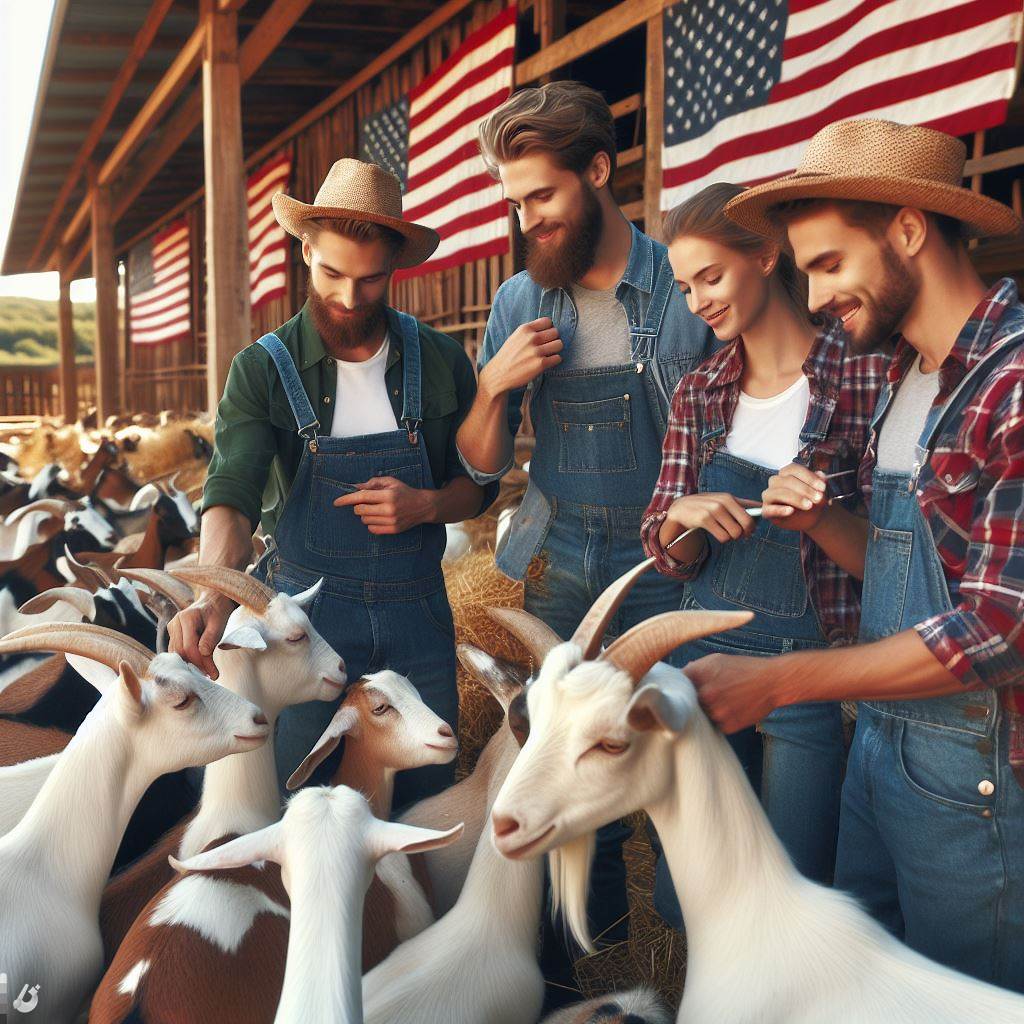
Dual-Purpose Goat Breeds
Dual-purpose goat breeds are highly versatile and valuable for both milk and meat production.
These breeds serve a dual function on the farm, making them a popular choice among American farmers.
Oberhasli Goats
Oberhasli goats are medium-sized and known for their excellent milk production.
They have a distinctive color pattern of a black coat with reddish-brown markings on their face and legs.
Aside from being great milk producers, Oberhasli goats also have good meat quality.
They are hardy and adaptable to various climates, making them suitable for many American farms.
Toggenburg Goats
Toggenburg goats are one of the oldest goat breeds with a history dating back to the Swiss Alps.
These goats have a medium-to-large size and are recognized for their exceptional milk production.
Toggenburg goats have a unique color pattern of various shades of brown with white on their ears and tail.
In addition to their milk production, Toggenburg goats also have good meat qualities.
They are sturdy and can thrive in different farming environments, making them a favorite among American farmers.
Sable Goats
Sable goats are a popular and adaptable dual-purpose breed for American farmers.
They are medium-sized and have a beautiful color pattern of black with light-to-dark brown markings.
Sable goats have good milk production and their milk is well-known for its high butterfat content.
In terms of meat production, Sable goats have good carcass quality and flavorful meat.
They are hardy and can adapt to various climates, making them ideal for American farms.
Dual-purpose goat breeds offer American farmers the advantage of both milk and meat production.
Oberhasli, Toggenburg, and Sable goats are popular choices due to their versatility and adaptability.
These breeds provide a sustainable solution for farmers, as they can maximize their resources and profit potential.
Whether it’s for dairy products or meat, these dual-purpose goats are valuable assets on the farm.
American farmers can rely on them for consistent milk production and quality meat for their operations.
Investing in dual-purpose goat breeds is a smart choice for American farmers looking for efficiency and profitability.
By choosing breeds like Oberhasli, Toggenburg, and Sable goats, farmers can meet multiple needs with a single breed.
These versatile goats are a valuable addition to any farm and contribute to a successful and sustainable agricultural operation.
Read: Sheep & Goat Vaccination Schedules
Fiber Goat Breeds
Fiber goat breeds are highly valued for their luxurious wool, which has various uses in the textile industry.
These breeds have distinct characteristics that make them popular among American farmers.
The Value of Fiber Goat Breeds for Their Luxurious Wool
Fiber goat breeds produce wool that is highly sought after for its softness, warmth, and breathability.
Showcase Your Farming Business
Publish your professional farming services profile on our blog for a one-time fee of $200 and reach a dedicated audience of farmers and agribusiness owners.
Publish Your ProfileManufacturers often process it into high-quality yarn, which they then use to create luxurious clothing, accessories, and home furnishings.
The natural fibers from these goats have unique properties that make them desirable in the fashion world.
Fiber goat breeds provide a sustainable and renewable source of fiber production.
The goats are shorn annually, and their wool quickly regrows, making them a practical choice for farmers who want to profit from the fiber industry.
Additionally, the goats’ grazing habits help maintain healthy pasture ecosystems.
Popular Fiber Goat Breeds for American Farmers
Angora Goats
Angora goats produce long, lustrous, and extremely fine mohair, making them well-known for this distinctive fiber.
Mohair enthusiasts highly value its sheen, silkiness, and durability.
Breeders have been cultivating these goats for centuries to enhance fiber production, and they thrive in various climates across the United States.
Cashmere Goats
Cashmere goats produce the soft and warm cashmere fiber.
Their undercoat is composed of ultra-fine hairs that provide excellent insulation.
American farmers have successfully raised cashmere goats, particularly in regions with colder climates, where these goats thrive.
Pygora Goats
Pygora goats are a crossbreed between Angora and Pygmy goats.
They produce a luxurious fiber that combines the characteristics of both parent breeds.
Pygora fiber varies in type, ranging from silky and lustrous to fine and downy.
These goats are popular among smaller-scale farmers due to their manageable size and fiber versatility.
These three fiber goat breeds have unique qualities that make them valuable assets for American farmers interested in the fiber industry.
By selectively breeding and maintaining the genetics of these breeds, farmers can produce high-quality fiber and contribute to the booming demand for natural and sustainably sourced materials.
In essence, fiber goat breeds play a vital role in providing American farmers with a sustainable and profitable source of luxurious wool.
The value of their fiber cannot be understated, considering its desirability in the textile industry.
Angora, Cashmere, and Pygora goats are popular choices among farmers due to their exceptional wool qualities and adaptability in different climates.
By embracing these breeds, American farmers can participate in the growing market for natural and environmentally friendly fiber products.
Considerations for Choosing a Goat Breed
When it comes to choosing a goat breed for their farms, American farmers need to take several factors into consideration in order to make the most informed decision.
These factors can greatly impact the success and profitability of their farming venture.
Let’s explore some of the key considerations:
Climate and Environmental Conditions
The climate and environmental conditions in which the goats will be raised play a crucial role in determining the breed that will thrive.
Different breeds have varying levels of tolerance to extreme temperatures, humidity, and altitude.
Farmers should choose a breed well-suited to their specific region to ensure the health and well-being of the goats.
Farming Goals and Objectives
Farmers should carefully evaluate their farming goals and objectives before selecting a goat breed.
Some breeds excel in milk production, while others are bred specifically for meat or fiber production.
Farmers need to identify their primary focus and select a breed that aligns with their production goals to maximize efficiency and profitability.
Market Demand
The market demand for different goat products should also be taken into account.
Farmers should conduct market research and assess the demand for goat milk, meat, or fiber in their area.
By choosing a breed that is in high demand, farmers can ensure a steady market for their products and increase their chances of profitability.
Personal Preferences
When choosing a goat breed, do not overlook the personal preferences of the farmers.
Some farmers may have a particular fondness for a specific breed or traits such as coat color, size, or temperament.
While personal preferences should not be the sole determining factor, they can play a role in the overall satisfaction and enjoyment of raising goats.
Availability of Breeding Stock
It is important to consider the availability of breeding stock for the chosen goat breed.
Farmers should investigate whether the breed they are interested in is readily available in their area or if they need to import breeding animals.
Local availability can impact the ease of sourcing new goats for breeding purposes and may also affect the overall cost.
Resources and Facilities
Farmers should evaluate their existing resources and facilities to ensure they are suitable for the chosen breed.
Showcase Your Farming Business
Publish your professional farming services profile on our blog for a one-time fee of $200 and reach a dedicated audience of farmers and agribusiness owners.
Publish Your ProfileDifferent breeds may have different requirements for housing, pasture land, and feeding.
It is crucial for farmers to assess if they have the necessary infrastructure and resources to provide proper care and management for the chosen breed.
Disease Resistance
Consider the breed’s resistance to common diseases prevalent in the area.
Some breeds exhibit greater resilience and stronger immunity against specific diseases.
By choosing a breed with high disease resistance, farmers can minimize the risk of illness and reduce veterinary costs.
Breeding and Reproduction
Farmers should also consider the breeding and reproduction characteristics of the goat breed.
Some breeds have higher fertility rates and are more prolific breeders, while others may require more intervention and have lower reproductive efficiency.
Understanding these factors can help farmers plan for successful breeding and maintain a healthy and growing herd.
Maintenance and Care
Different breeds have varying levels of maintenance and care requirements.
Some breeds may be more low-maintenance, requiring minimal intervention and management, while others may need more regular grooming, hoof care, and parasite prevention.
Farmers should choose a breed that aligns with their available time, resources, and capabilities for proper care.
By carefully considering these factors, American farmers can select the most suitable and profitable goat breed for their specific farming needs.
Each factor plays a vital role in the success and sustainability of a goat farming venture, making informed decision-making crucial for long-term profitability.
Conclusion
In closing, selecting the right goat breed is crucial for American farmers.
It determines the success of their farms and overall profitability.
Farmers can maximize productivity and ensure the health and well-being of their goats by selecting a breed that suits their specific needs and goals.
However, it is important to note that this blog post, only provides an overview of essential goat breeds for American farmers.
To make an informed decision, readers are encouraged to conduct further research and consult experts in the field.
There are many factors to consider, such as climate, available resources, market demand, and personal preferences.
It is essential to understand the specific characteristics and requirements of different goat breeds before selecting the best fit for one’s farm.
By seeking advice from experienced goat farmers and breeders, attending educational workshops or seminars, and reaching out to agricultural extension services, farmers can gain valuable insights and guidance.
This will ensure that they make a well-informed decision that aligns with their objectives and optimizes their chances for success.
The right goat breed can make a significant difference in the profitability and sustainability of a farm.
American farmers should carefully evaluate their options, conduct thorough research, and seek expert advice before making their final decision.
By doing so, they can set themselves up for success and create a thriving goat farming operation.

